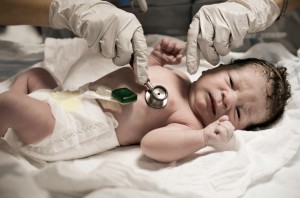Athetoid / Dyskinetic Cerebral Palsy

Athetoid Cerebral Palsy
Athetoid cerebral palsy (also known as dyskinetic CP, dystonic CP, choreoathetoid CP, or ADCP) accounts for 10 to 20 percent of all cases of cerebral palsy, and is characterized by fluctuations in muscle tone between being too tight and too loose. ADCP usually affects the whole body instead of a particular region, and is frequently associated with uncontrolled movements, exaggerated reflexes, or the tendency to drag a foot or a leg while walking.
Statistics show that about 1 in 4 children with ADCP also suffer from co-occurring epilepsy, and about 30% suffer some cognitive impairment. Interestingly though, a large percentage of people with ADCP have above average intelligence!
Athetoid cerebral palsy is sometimes confused with adult onset dystonia because the symptoms are the same. However, adult onset dystonia is degenerative and appears much later in life, while ADCP occurs around the time of birth and is not degenerative or progressive.
What Causes Athetoid-Dyskinetic Cerebral Palsy?
Athetoid CP, like all cases of cerebral palsy, is caused by brain damage. With ADCP, the damage is usually to the cerebellum or basal ganglia (the areas of the brain which help control movement). Specifically, the cerebellum and basal ganglia are responsible for processing the nerve signals enabling coordinated, smooth movement, and maintaining body posture. Damage to these areas can lead to symptoms such as slow, random, or involuntary movements.
Brain damage causing cerebral palsy is usually the result of a lack of oxygen reaching the brain during fetal development (often due to fetal asphyxia). Other ways brain damage can occur include: Poor pre-natal care, alcohol or drug abuse while pregnant, head trauma shortly after birth, infection during pregnancy, or bleeding in the brain.
Studies have shown that athetoid-dyskinetic cerebral palsy has a higher than normal association with brain damage caused by jaundice. When signs of jaundice are not treated immediately, brain damage can occur as a result of an increase in the amount of bilirubin in the infant’s blood. Eventually, jaundice can lead to a specific kind of brain damage called kernicterus, which also frequently results in hearing loss or deafness. Bilirubin levels may increase as an effect of certain medications, infections, and Rh factor blood incompatibility between the mother and baby.
Characteristics of Athetoid-Dyskinetic Cerebral Palsy
The main characteristic of athetoid / dyskinetic cerebral palsy is uncontrolled, slow, writhing movement of the limbs. Sometimes the muscles of the face, tongue and throat are affected, causing grimacing, twitching, drooling, or tongue thrusting. Patients may also have dysarthria, a problem coordinating the muscle movements needed for speech.
Uncontrolled movements often increase during periods of emotional stress, and are usually not present while sleeping. A child with dyskinetic CP who gets very excited may end up flailing their arms around vigorously, even though they don’t mean to.
Those with ADCP often have a hard time maintaining posture, which makes sitting or standing difficult and uncomfortable. Additionally, people with dyskinetic cerebral palsy can have a hard time moving their hands to a certain spot or holding on to objects.
Treatment Options
The treatment for athetoid cerebral palsy individuals will likely include a prescribed group of drugs called anticholinergics that are used to decrease abnormal and unnecessary movements. This blocks the effects of acetylcholine, which triggers muscle contractions when acted on by nerve cells. Other drugs used to treat athetoid cerebral palsy include Trihexyphenidly, Benztropine and Procyclidine.
In addition to medication, there are physical therapies that are employed to help strengthen muscles and facilitate better movement and control. Speech therapy will also work toward making their speech more clear, or facilitating ways to better communicate. For more information on treatments available to your child, speak to your pediatrician.
